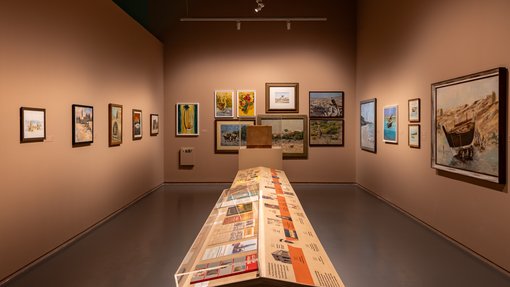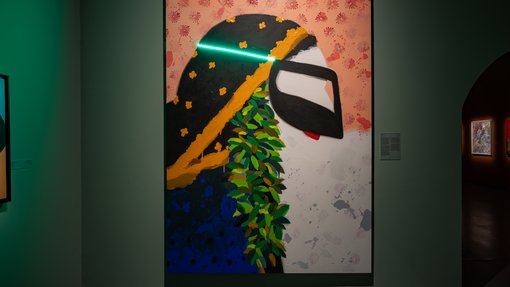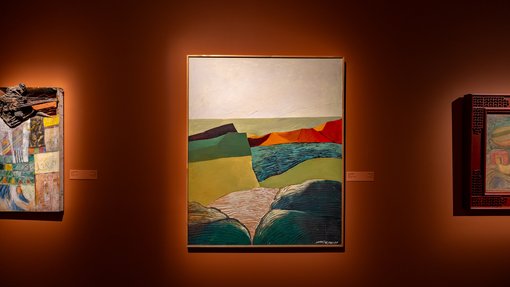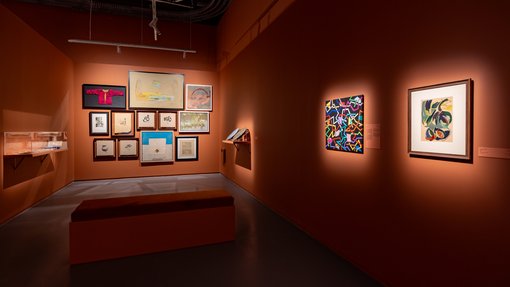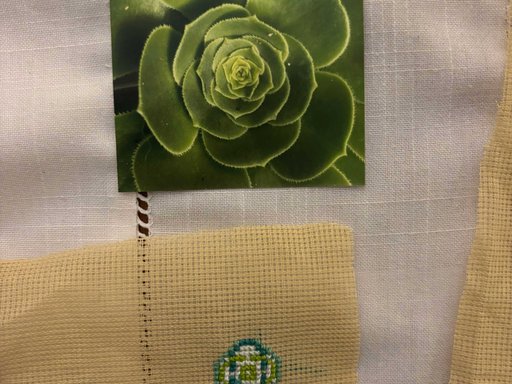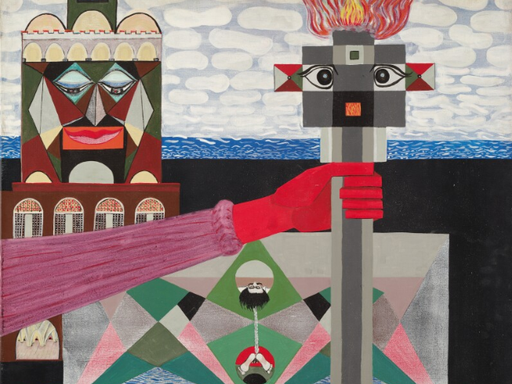The exhibition is a testament to the diversity and development of the nation’s visual culture. Featuring a significant number of artists and artworks, it reveals the distinct thematic approaches that have emerged and converged over different generations.
About the Galleries
Qatar: Close to My Soul is divided into three thematic sections, each offering different insights into modern and contemporary art in Qatar.
In this verse, the poet expresses a profound love for Qatar, pledging his life to its redemption. The artists in this exhibition share this deep devotion, drawing inspiration from Qatar’s diverse landscapes and seascapes. Rather than aiming for purely realistic depictions, they reimagine these spaces through artistic expression, conveying their emotions and impressions.
Alongside their fascination with nature, many artists have expressed admiration for traditional dhows, which symbolise the economic lifeline that Qataris have relied on for centuries for pearl diving and transportation of goods, capitalising on Qatar’s geographical position as a peninsula. Artists, especially those from the first and second generations, often draw inspiration from their memories of life in Qatar before its rapid urban development.
Additionally, artists from various generations document the remnants of towers and buildings that still stand today, capturing them in paintings imbued with nostalgia. Their works also feature scenes of the desert and wildlife, reflecting the deep connection and attachment of the Qatari people to their land.
The Dewdrops: People and Society
In this line of poetry, the poet compares his love for his homeland to countless dewdrops that form overnight, adorning flowers at dawn. This metaphor echoes the portraits of community members by Qatari artists, who celebrate these individuals as vital, cherished elements of local culture and society. Through their work, artists aim to capture the essence of these figures, documenting their lives in both private and public spaces.
For example, Hassan Al-Mulla portrays scenes of daily life in Qatari homes, while Maryam Mohammed Abdulla and Jameela Al-Shraim depict artisans engaged in traditional crafts in public spaces. Badriya Al-Kubaisi captures the beauty of women through faces stripped of detail, a technique that may reflect the desire of some artists at certain points in their careers to avoid detailed facial expressions, possibly influenced by religious beliefs.
Other artists, such as Ahmed Al-Haddad, Bouthayna Al-Muftah, and Abeer Al-Kuwari, draw inspiration from folk songs and tales, weaving cultural narratives into their artwork. Meanwhile, Faraj Daham offers a thought-provoking conceptual experience, repurposing consumer objects to comment on human behaviour and societal structures.
Boundless Expanse: Abstraction
In this line of poetry, the poet conveys his profound affection for Qatar, portraying his love as a boundless expanse. This section of the exhibition showcases diverse explorations in abstract art, examining the themes and materials that inspire local artists. Some artists draw inspiration from traditional motifs and the local environment, incorporating techniques like weaving and using materials such as palm leaves and henna dye. Their experimentation has resulted in a broad range of creative expressions, from emotional to conceptual, alongside social dialogues and explorations of colour and form.
Emerging artists like Aisha Al-Sowaidi and Maryam Al-Homaid, both VCUarts Qatar graduates, adopt a multidisciplinary approach, while Wafa Al-Hamad, Suad Al-Salem, and Khawla Al-Mannai, who were part of the first few graduating groups of Art Education at Qatar University in the 1980s, excel in technique and colour treatment. Faraj Daham and Mohammed Al-Atiq focus more on conceptual art.
Since the late 1960s, local artists have actively participated in the wider regional huruffiya movement, a cultural movement that uses Arabic letterforms to express a visual Arab identity. Yousef Ahmad, Ali Hassan, and Manar Al-Muftah are especially prominent in this movement, each offering a unique interpretation of this art form.
